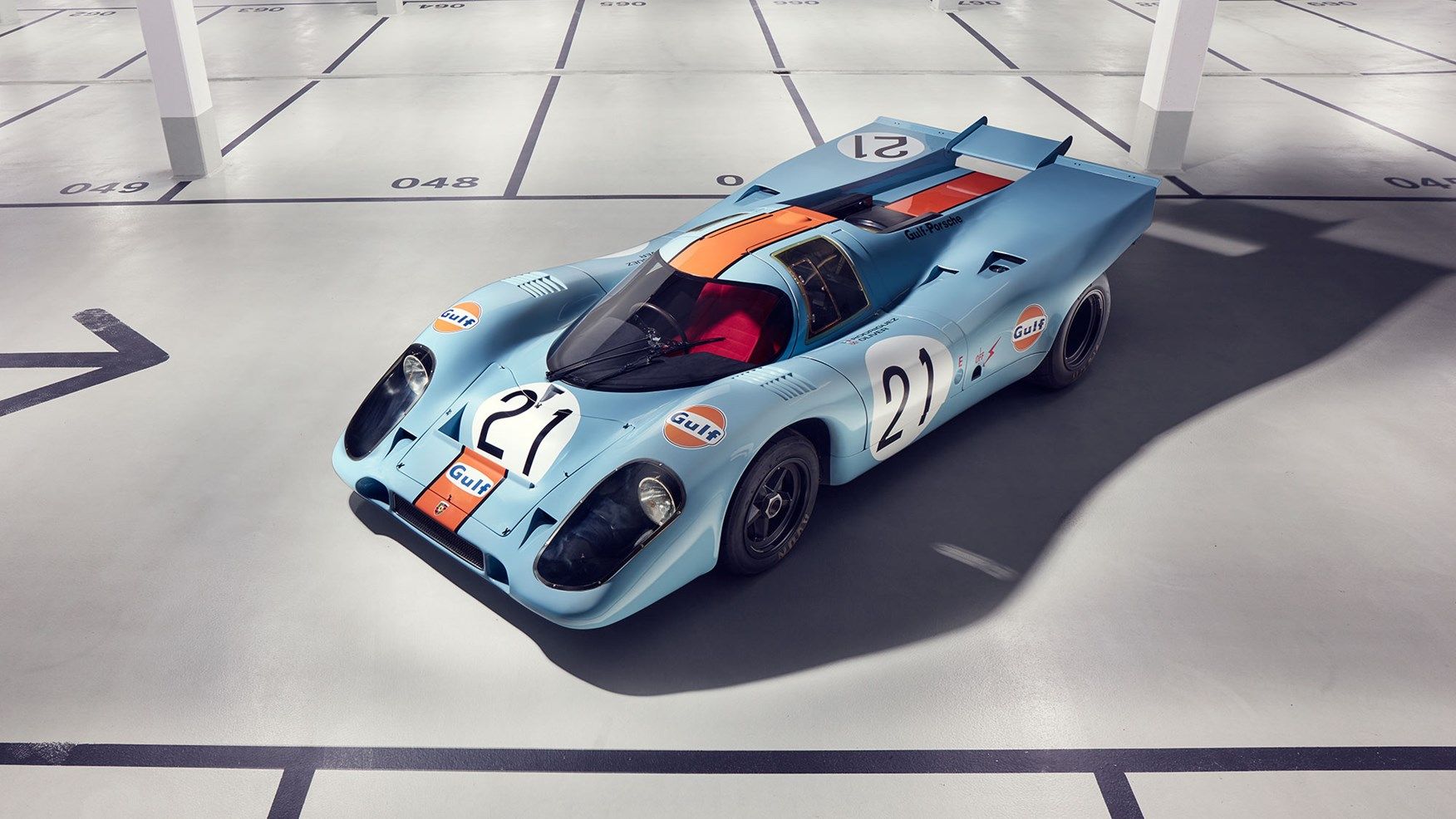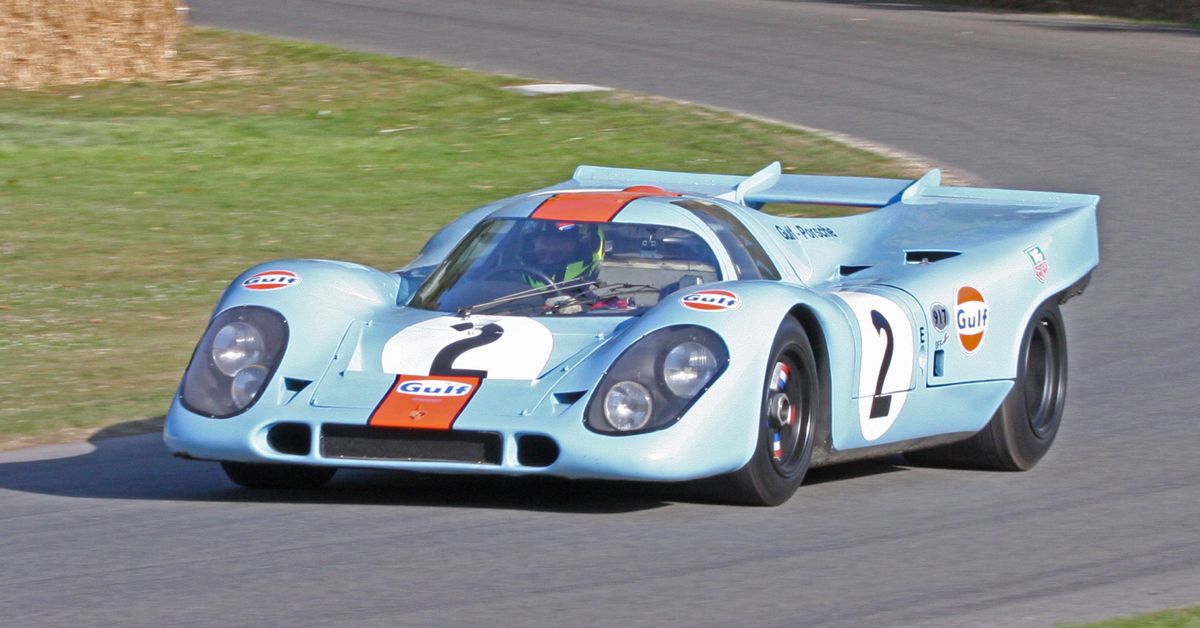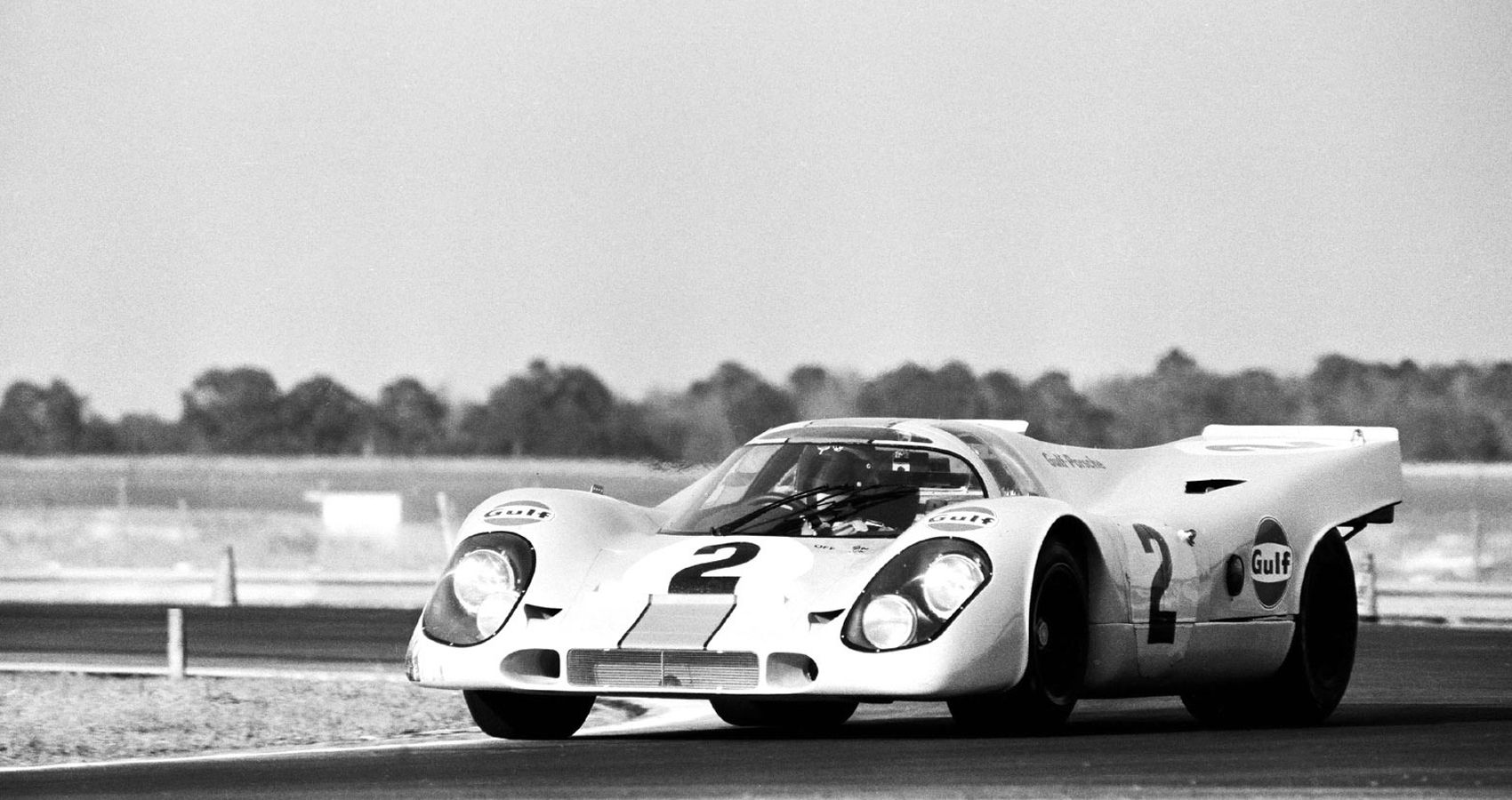The Real Story Behind Steve McQueen’s Porsche 917 In ‘Le Mans’
If you’ve ever taken an unbiased, critical look at the Aston Martin DB5, the converted 1959 Cadillac Ecto-1 from Ghostbusters, or even more recently, the Subaru Impreza WRX from Baby Driver and wondered about the justification of their legendary status, you’re not crazy. You’re just like a thinking gearhead.
The bare-bones truth is that most celebrated movie cars have the silver screen to thank for their popularity more than their mechanical pedigree or striking designs. But there are a few times when the reverse is the case, or at least the power of the silver screen meets halfway with the finest of automotive engineering. Steve McQueen’s Porsche 917K from the 1971 Le Mans movie is a prime example of the exemption, a movie icon that also happened to be a genuinely powerful racer.
You know the usual post-shoot ending of movie cars. They often go straight to the scrapyard from the movie set. The Bullitt Mustang narrowly escaped a similar fate when the company sent the stunt copy to the salvage yard, and a Warner Bros employee bought and sold the hero car for a paltry $6,000. On the contrary, the Porsche 917K sports car left the movie set to claim multiple victories in non-fictional endurance races.
Origins Of The Porsche 917
The 917 was born to help Porsche take advantage of the new rules instigated by the Commission Sportive Internationale (the FIA’s then-independent competition arm) regarding 5-liter sports cars. The Commission reduced the capacity for the Group 6 International Championships of Makes to three liters in a bid to taper the speed of unlimited-capacity Group 6 prototype racing cars like the Ford GT40 Mk IV (propelled by a 7-liter mill) and the 4-liter V12-powered Ferrari P at Le Mans and other such tracks.
The capacity reduction would last four years between 1968 and 1971, which should also encourage automakers already building 3-liter F1-rated engines to adapt them for endurance racing. The Commission capitulated and allowed 5-liter Group 4 sports cars, with a caveat that the participating model must have at least 50 units made.
Existing track warriors like the British-made Lola T70 coupe and Ford’s GT40 Mk 1 got hit particularly hard by this rule. The resulting low turnout for races forced the CSI to cut automakers some slack by reducing the required minimum production figure for participation in the Group 4 International Championship of Makes (later the World Sportscar Championship) from 50 units to 25, starting in 1969 through the planned end of the rules in 1971.
With Ferrari, a no-show for the 1968 season, and the Alan Mann-built Ford 3L GT “P68” sports prototype racing cars turning out a calamitous disappointment, Porsche’s 2.2-liter 907 dominated the sports car category, leaving the John Wyers-built 4.7-liter Ford GT40 Mk 1 to command the faster tracks. However, Porsche made a bold move to exploit this regulation starting in July 1968.
Since the marque already had to rebuild its race cars with new chassis after every one or two races, they now decided to conceive, design, and build 25 versions (not copies) of all-new 4.5-liter racing machines for the sports category, with the single-minded goal of winning its first overall victory in the 24 Hours of Le Mans come June 14, 1970. And so, the Porsche 917, based on the 3-liter Porsche 908 racing car, was born in just ten months.
An Overview Of Steve McQueen’s 1970 Porsche 917K
The 917K was more than a variant of the 1969 Porsche 917. It was an evolution of the original car that was basically undrivable at high speeds due to aerodynamics. With the 1969 championships over, John Wyer of JW Automotives requested a three-day test session of the original car at the Austrian Red Bull Ring (formerly the Östeirreichring).
Porsche’s technical team tagged along and brought the 1969 Porsche 917 PA Spyder Can-Am race car for comparison. The test drivers immediately preferred the PA, inspiring a light-bulb moment in the marque’s engineers and JW Automotive to replicate the PA’s more upswept tail on the 917. The resulting conversion is what got known as the 917K, making its debut at the 1970 24 Hours of Daytona. In fact, the 917K went on to become the standard configuration for all races except Le Mans, the Nürburgring 1000 km, and the Targa Florio.
Well, that’s until 1971, when Porsche further developed the 917K for that year’s racing season, with revisions like vertical fins and two air boxes on the tail section for better aerodynamics and cooling. These were faster than the original 1970s 917K, a lightweight version of which won the 1971 24 Hours of Le Mans. This was the car that starred in Steve McQueen’s Le Mans, released in 1971.
The Real Story Of Steve McQueen’s Porsche 917 In ‘Le Mans’
McQueen executed a stellar job of capturing the essence of the 24 Hours of Le Mans in the Hollywood flick of the same name, but his four-wheeled co-star in the movie – a 1970 Porsche 917K, is as much an icon as the Hollywood A-Lister. When the same car, with chassis 026, got scheduled to cross RM Sotheby’s Monterey auction block in August 2021, it would have fetched between $16 million and $18 million.
And why not? The 1971 movie may have failed woefully at the box office, but the Le Mans-winning race car didn’t lose an iota of respect among racing fans, including fans who learned about the car’s racing history for the first time after watching footage of the actual period race cars driving on Le Mans Circuit de la Sarthe. Some of the footage got shot during actual races, although most was a reenactment of the races.
The meat of the story is, perhaps, the fact that the very car Steve McQueen drove in the movie has a real-life racing pedigree as one of three cars entered by JW Automotive at the 1970 24 Hours of Le Mans. The real-life drivers were Mike Hailwood and David Hobbs. Unfortunately, the car dropped out of the race after Hailwood lost traction and crashed it on the 50th lap.
Thereafter, Porsche rebuilt and re-bodied the car as a 917 Spyder with the renumbered chassis 031. It was at this point that the 917 found its way to the big screen, after which it went on to serenade the European Interserie Championship from 1971 to 1973 before retiring from motorsport in 1974.
With its racing career concluded, the storied Porsche 917 passed from collector to collector, eventually restored to its 1970 Le Mans specifications. It’s worth mentioning McQueen had another 917K with chassis 024 in the Le Mans film. The racer’s estimated $18.5 million auction sale got based on the fact that this second version which primarily served as a test car fetched $14 million at a 2017 auction.
Sources: Wikipedia, RM Sotheby’s











